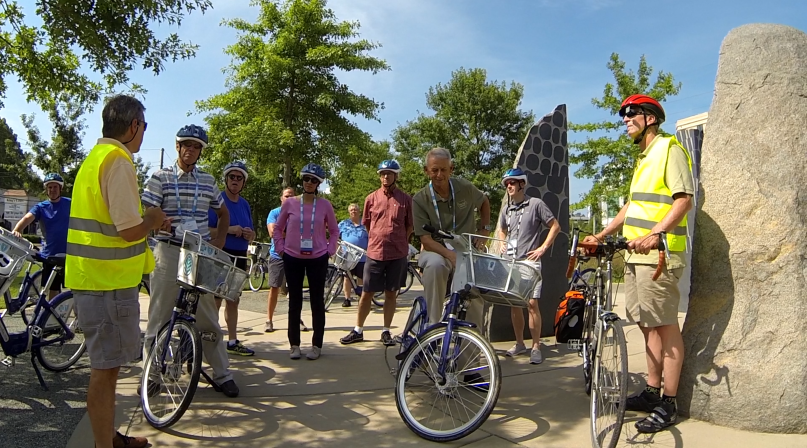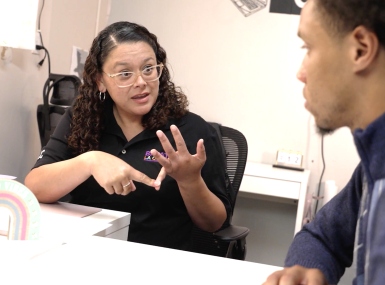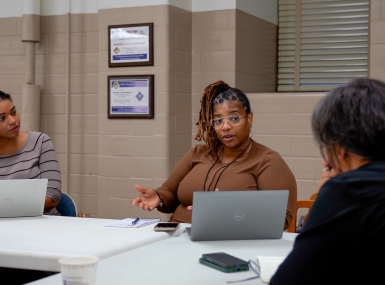| |
As part of the 2015 NACo Annual Conference in Mecklenburg County, N.C., a group of 20 attendees from counties across the country took part in a mobile bike tour of Charlotte’s bike and pedestrian infrastructure.
Ken Tippette from the Charlotte Department of Transportation and Dick Winters from the Mecklenburg County Health Department led participants on a six-mile tour over 2.5 hours, with stops to view key components of their on-street bike lanes, off-street rail trails and greenways.
Through a partnership between Charlotte and Mecklenburg County, the area has seen a significant change in accessibility for cyclists and pedestrians. In 2003, there was only one mile of striped bicycle lanes in Charlotte. In just over a decade, Charlotte and Mecklenburg County have dramatically increased the amount of bike and pedestrian facilities.
Today, there are 81 miles of bike lanes and paved shoulders, 55 miles of signed routes and 44 miles of greenways and off-street paths for a combined 180 miles of bike and pedestrian infrastructure. Supporters of increased bike and pedestrian trails say these facilities ease automobile traffic congestion by increasing bike and pedestrian traffic, improve on-street bike commuter accessibility, increase safety for cyclists and pedestrians, and create opportunities for residents to use greenways and trails connected to the area’s light rail system for exercise and leisure.
On their Sunday morning bike tour through Charlotte, participants learned about the city’s biking and pedestrian improvements.
Highlights along the tour route included the Little Sugar Creek Greenway, on-street bicycle parking corrals, a former Interstate access lane that was converted to an exclusive bike and pedestrian crossing, and an advanced stop box — road markings at signalized intersections — where sensors detect bicycles and allow them to get a head start when signals change.
Participants gathered ideas about opportunities to apply in their counties. Sig Hutchinson from nearby Wake County, N.C. had a number of key takeaways as his county undertakes efforts to move its pedestrian and biking infrastructure.
“It’s educational for county elected officials to see how other counties accommodate for cycling and active transportation,” he said. “In addition to an active bike share program, I enjoyed seeing how Charlotte and Mecklenburg County repurposed their four-lane, higher-speed roads into two-lane corridors with a turn lane to make room for bicycling and pedestrian traffic.
“Known by some planners as a ‘road diet,’ these newly redesigned corridors provide for slower speeds promoting [safety], active transportation options and more vibrant shopping centers, as well as developing corridors that look more inviting and fun. They can be difficult to do but are definitely worth the time and effort once completed,” he added.
NACo is highlighting the important connection between the social and economic, health behaviors and the physical environment and community health. Accessibility to safe biking and pedestrian infrastructure for both exercise and active transportation contribute to improve health factors in the annual Robert Wood Johnson Foundation County Health Rankings.
For more information on the County Health Rankings & Roadmaps program, visit www.countyhealthrankings.org.




